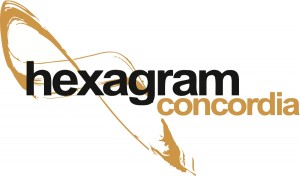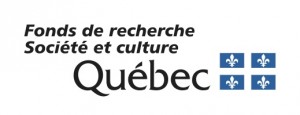N-Polytope
_in collaboration with Chris Salter, Sofian Audry, Adam Basanta, Garnet Willis, Elio Bidinost and Thomas Spier
N-Polytope (Behaviors of Light and Sound after Xenakis) is a spectacular light and sound environment combining cutting edge lighting, lasers, sound, sensing and artificial intelligence software technologies inspired by composer Iannis Xenakis’s radical 1960s-1970s works named “Polytopes” (from the Greek poly, many and topos, space). As large scale, immersive architectural environments that made the indeterminate and chaotic patterns and behavior of natural phenomena experiential through the temporal dynamics of light and the spatial dynamics of sound, the polytopes still to this day are relatively unknown but were far ahead of their time: a major landmark in the history of the audio-visual arts and performative architectural practice.
 N-Polytope at Nuit Blance Paris, 2015; photo: Thomas Spier
N-Polytope at Nuit Blance Paris, 2015; photo: Thomas Spier
This re-imagining runs in both a 25 minute performance as well as a continuously evolving installation mode, both steered through a sensor network utilizing cutting edge machine learning algorithms which learns different rhythmic and temporal patterns produced by the light and sound and helps in generating a totalizing, visceral composition that self organizes in time. 150 10 Watt LED’s and many tiny speakers are suspended through the space on a single ruled surface constructed of thin aircraft cable, creating a walk-through performance environment which continually swings between order and disorder, akin to Xenakis’s original fascination with the behaviors of natural systems. Creating bursts of light as well as evolving patterns, the behavior of the LED’s suggest cosmological events, like the explosion of stars and supernovas. While the LED’s create a changing space of bursting points, colored lasers that bounce off the surface of fixed and changing mirrors generate fleeting architectures of lines and shapes that that appear, flicker and disappear before the visitors’ eyes. Counter-pointing the intense visual scenography, multi-channel audio from the small speakers as well as the larger environment fills the space, shifting between sparse natural and dense electronic textures – noisy bursts, clangerous, gamelan-like lines and percussive explosions of sound. Across the architectural structure, the network of tiny speakers produce the behaviors of mass sonic structures made up of many small elements (sonic grains) creating swarms of tiny sounds that resemble a field of cicadas or masses of insects.
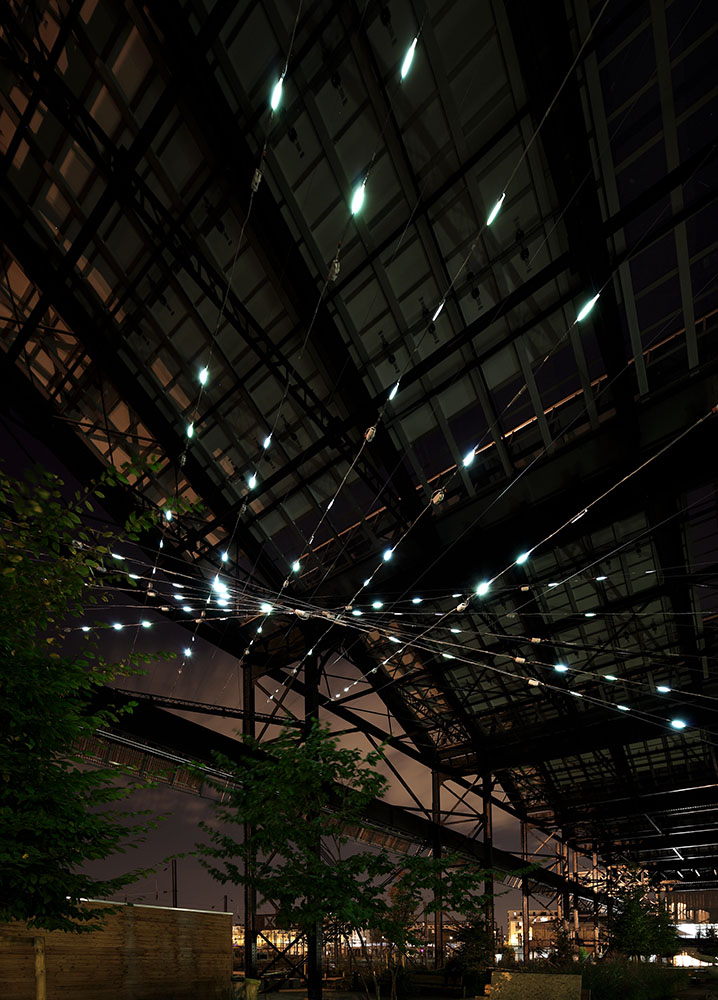 N-Polytope at Nuit Blance Paris, 2015; photo: Thomas Spier
N-Polytope at Nuit Blance Paris, 2015; photo: Thomas Spier
N-Polytope is more than just a historical exercise but instead an attempt to grasp how Xenakis’s’ interest in modeling the behavior and patterns of nature and the cosmos in their exquisite fluctuations between order and disorder more than forty five years ago can still powerfully resonate with our own historical moment of extreme instability in natural and artificial systems creating in our current time a strange, flickering, unstable world of non-human presences constructed of light, sound and space that unfold before us.
 N-Polytope at Transart, Bolzano, 2021; photo: Tiberio Sorvillo
N-Polytope at Transart, Bolzano, 2021; photo: Tiberio Sorvillo
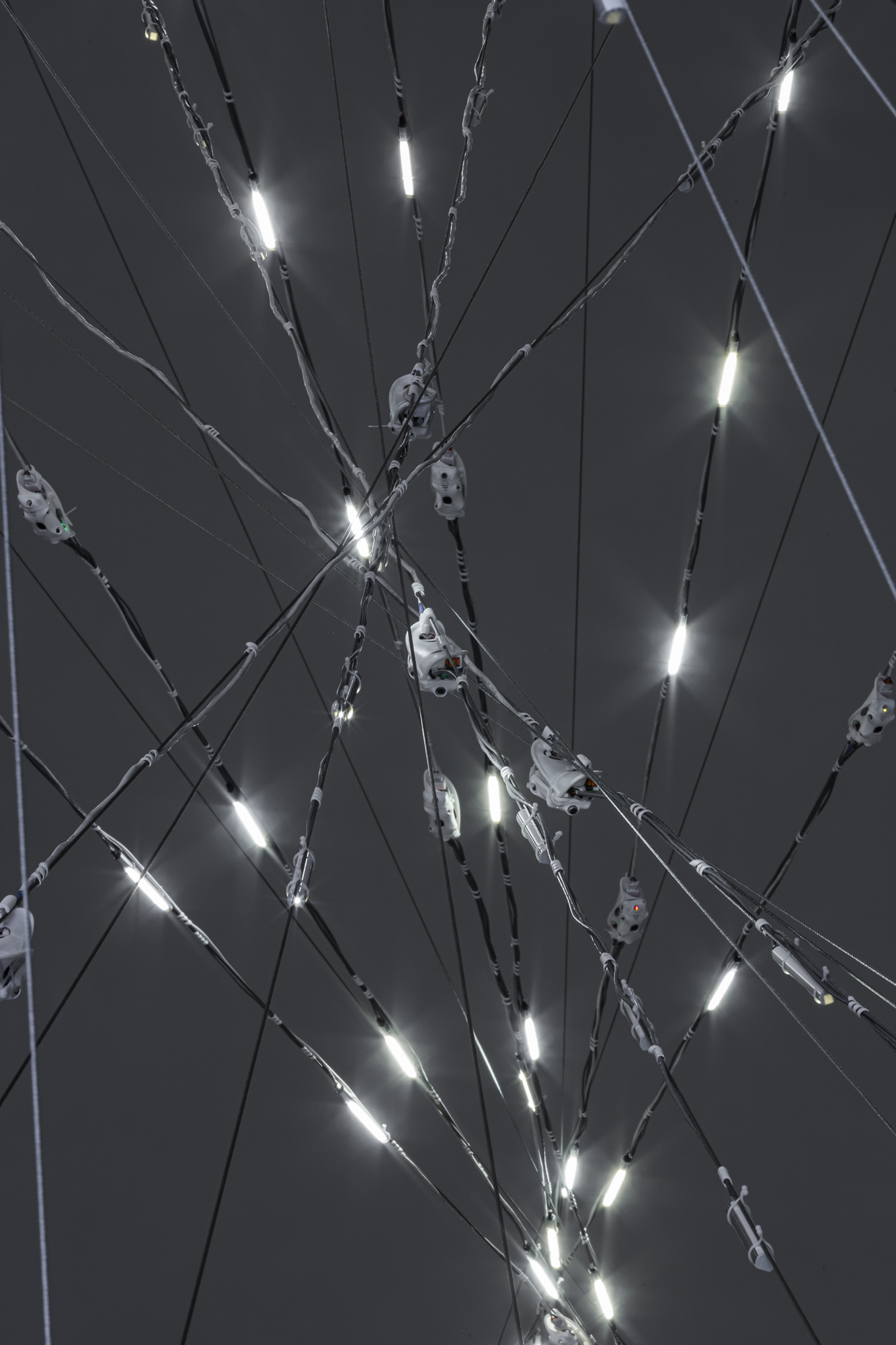 N-Polytope at Transart, Bolzano, 2021; photo: Tiberio Sorvillo
N-Polytope at Transart, Bolzano, 2021; photo: Tiberio Sorvillo
Credits
- Concept/Direction: Chris Salter
- Composition: Chris Salter and Adam Basanta
- Architectural Design: Thomas Spier
- Embedded Systems and Micro Sound & Light Design/Programming: Marije Baalman
- Machine learning algorithms: Sofian Audry
- Casing, Lighting and Laser System Design: Elio Bidinost
- Structural Consultant: Schlaich bergermann und partner / David Sommer
2012-2015 editions
- Electronics Assembly: Rene Wassenburg (Schrikdraad Ontwerp) and Stan Verberkt
- Openframeworks Laser Mirror Control Software: Samuel Tissot-Jobin
- Production: LABoral Centro de Arte y Creación Industrial and LabXModal, Montreal
2015-2018 editions
- Electronics design: Simon Claessen (drukknop) and Marije Baalman
- Electronics assembly: Marije Baalman, Alexandre Saunier, Garrett Lockhart, Owen Coolidge
- Casing design: Morgan Rauscher, Alexandre Saunier
2021 edition
- Architectural design: Marije Baalman
- Casing design: Garnet Willis
- Production assistance: Martin Kaffarnik, Alexandre Saunier
2025 edition
- Architectural design: Marije Baalman
- Casing design: Garnet Willis
- Production assistance: Remco Schuurbiers
 N-Polytope at LABoral, Gijon, 2012; photos: Thomas Spier
N-Polytope at LABoral, Gijon, 2012; photos: Thomas Spier
Shows
- April 4 - May 31, 2025, Proximity Music: Echoes of Entropy, Amare, The Hague, the Netherlands
- September 22 - 24, 2021, TRANSART festival, Bolzano, Italy
- September 1 - October 23, 2018, “Open Codes”, ZKM, Karlsruhe, Germany
- June 21 - October 8, 2017, “In search of Expo ‘67”, Musée d’Art Contemporaine, Montréal, Québec, Canada
- October 3, 2015, Nuit Blanche Paris, Hallo Pajol / Jardins Rosa Luxembourg, Paris, France
- May 1 - 13, 2014, Darling Foundry, Montréal, Québec, Canada
- January 26 - February 23, 2014, CTM ‘14, Stattbad Wedding, Berlin, Germany
- January 2014, Lighttopia, Vitra Design Museum, Weil am Rhein, Germany
- July, 20 - September 10, 2012, LABoral Centro de Arte y Creación Industrial, Gijón, Spain
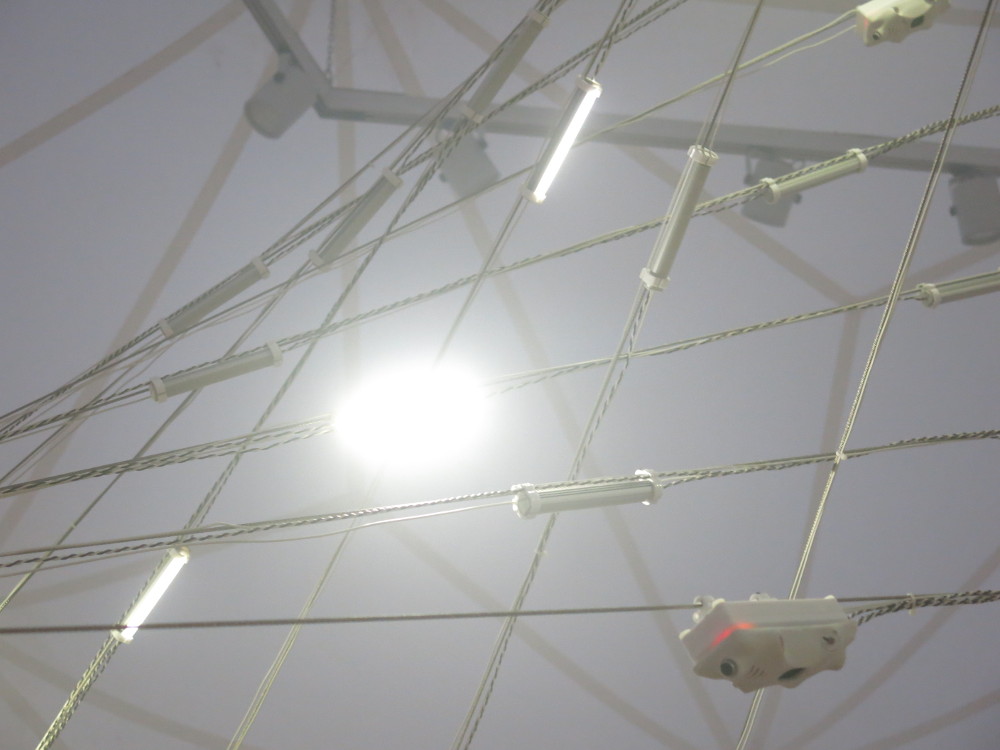 N-Polytope at Vitra Design Museum, Weil am Rhein, 2012; photo: Marije Baalman
N-Polytope at Vitra Design Museum, Weil am Rhein, 2012; photo: Marije Baalman
In collaboration with:
With the support of:
related events
-
Mention in the Volkskrant in Rewire review
Dutch national newpaper the Volkskrant reviewed the Rewire festival and has much praise for N-Polytope, while being quite critical of the organisation of the Rewire festival:
Translation by me (original Dutch below):
The lucky ones to obtain a ticket [to the festival], get their wristbands in the foyer of the concert hall Amare. Behind the cash counters the first disappointment is found. And no, not artistically. The show N-Polytope by Marije Baalman and Chris Salter is a multimedia spectacle that buzzes around you from four speakers.
The artwork seems to be electrified: music tantalizes the ears, on highly tensioned wires led lamps are flickering. With N-Polytope Baalman and Salter want to reflect on early electronic work of the Greek composer Iannis Xenakis. That is not a misplaced bluff: their piece is a sparkling answer to the cosmic works that Xenakis composed in the 1970s with his self-invented computer program UPIC.
But why N-Polytope is presented on the staircase, right in front of the entrance, is a mystery. If one work needs a quiet, dark room, this one does. In broad daylight people are walking around, and chats and hugs are exchanged. It is like playing mikado in stormy weather: no matter how powerful N-Polytope is, little remains.
Choosing the location was weighing the pros and cons: yes, for attention of audience to experience the light and sound in its full depth, a fully dark space would have been preferable. But then the piece would have been set up in a blackbox space, have only been accessible for three days during the festival and have only attracted people who would choose to go to this blackbox. The architecture of the work would have had little interaction with the architecture of the venue it was presented in. Instead we chose for a location where a lot of people would encounter the work, also people who would not normally go and visit a work like this. Also the interaction between the architecture around the staircase in Amare and the architecture of the work have a nice interaction now. And as a plus: the work stays exhibited for a total of two months, making the time, effort and money invested in realising the show more than worthwhile.
-----> read full post
-
Behaviours of light and sound
This post was originally written in 2018, but then not published on the website yet. I’m happy to post it now, finally!
In this post, I will describe how the sound and light composition of N-Polytope is structured. For this I will start with the physical components, describe the sound synthesis and light synthesis algorithms, and then go to the bigger picture of the composition with these instruments and how the machine learning algorithms are used.
-----> read full post

